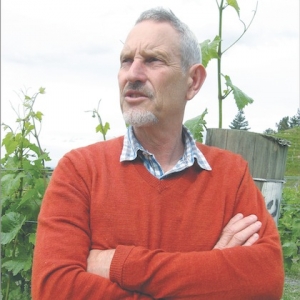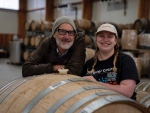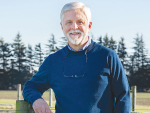As chairman of the Gimblett Gravels Winegrowers Association for the next two years, Gordon Russell expects to preside over some of the sub-region’s most significant developments.
Russell feels he’s “lucked in” in terms of promoting Gimblett Gravels’ wines from the 2013 and 2014 vintages – outstanding back-to-back years for the Hawke’s Bay region. The association is also planning a new major event but, as it’s still to be confirmed, he isn’t giving away any details just yet. However, he does say that it won’t be a wine festival and it will be an annual event.
Even more momentous will be the Gimblett Gravels Wine Growing District going public with its success in the battle against leafroll virus, which has decimated vineyards across its 800 hectares. As a measure of the problem, Villa Maria, with an interest in more than 140 hectares of the sub-region’s plantings, pulled out 35,000 vines.
New Zealand Winegrowers has helped fund the five-year project aimed at beating the disease. By adopting a collective approach and working closely with a team of Plant and Food Research scientists, the association is now close to effectively eliminating leafroll virus from its members’ vineyards. And Villa Maria, for one, is confident enough to have started replanting.
Recognising the marketing potential of this achievement, the association plans to trumpet the success as one of global significance.
“I do honestly believe that what we have achieved as a group has never been achieved anywhere else in the world,” says Russell, who points out that while it’s been a time-consuming and costly exercise, doing it properly means that Gimblett Gravels will ultimately develop into a region of healthy old vines.
“It puts us in a pretty good position I think.”
Senior winemaker at Esk Valley Estate, Russell is aware he’s taking on a heavy workload in his voluntary role as chairman. He’s been involved with the association from its beginnings in 2001, when a dozen wine companies got behind the initiative and invited media, including foreign press, to a launch hosted in Hawke’s Bay.
There are now 23 members – all of the sub-region’s landowners bar one. Russell feels there’s strength in belonging to a grouping based on soil.
“You’re either in or out. It’s very defined, it’s a soil map, it’s a boundary, and you’re in it or out of it. There’s no discretionary take on it and I think that’s good.”
The former Omahu channel of the Ngaruroro River was once regarded as little more than wasteland. The first grapes were planted in 1981 – Merlot, Cabernet Sauvignon and Cabernet Franc. Ten years later, there were still only 20 hectares in vineyard. However, by 1997, that had increased to more than 200 hectares and a further 400 hectares has been planted since 1998.
Ninety percent of Gimblett Gravels is in red grapes – 35 percent Merlot, 20 percent Syrah, 15 percent Cabernet Sauvignon, seven percent Malbec, four percent Cabernet Franc and nine percent in other red varieties such as Grenache, Montepulciano and Tempranillo.
“I think when people think of Gimblett Gravels they think of full-bodied reds including Syrah, Merlot, Cabernet and so forth. And I think we have sold that message.”
Russell also thinks the district can grow fantastic white wines including Esk Valley Estate’s own Verdelho.
“There’s a signature of Gimblett Gravel white wines that I really like. It’s generally low pH and it gives the wines a real nice backbone which seems contrary to what you think in terms of it being a warmer sub-region of New Zealand.”
Chardonnay, Viognier and aromatics such as Arneis, Riesling and Gewurztraminer make up the 10 percent of the sub-region planted in white varieties.
Looking back over the last decade, Russell believes the association has notched up some good gains in moving towards its ultimate goal, which is to make Gimblett Gravels famous and to see that reflected in the price of its wines and land values.
Field days are held for members, master classes have created traction in Hong Kong and London and tastings include a recent event focusing on 2013 releases staged in an upmarket Auckland wine shop.
“It was very much about the Gimblett Gravels rather than about individual members,” Russell says of the Caro’s tasting. “It just sort of stood out to me more this time.”
Agreeing there are considerable soil variations within the district, with deep pockets of silt in areas that were once backwaters and others made up of almost pure gravel, he says that reflects the braided streams that can be seen further upriver.
“But I think it all, in terms of drainage, warmth of soils and so forth, I mean that’s pretty uniform.”
It would be an interesting future exercise, he believes, to map the soil variations in greater detail.
“I’ve been drinking the wines for 20 years now,” he says of those coming off the Gimblett Gravels, “and I’m only starting to get my head around some of our vineyards.”












